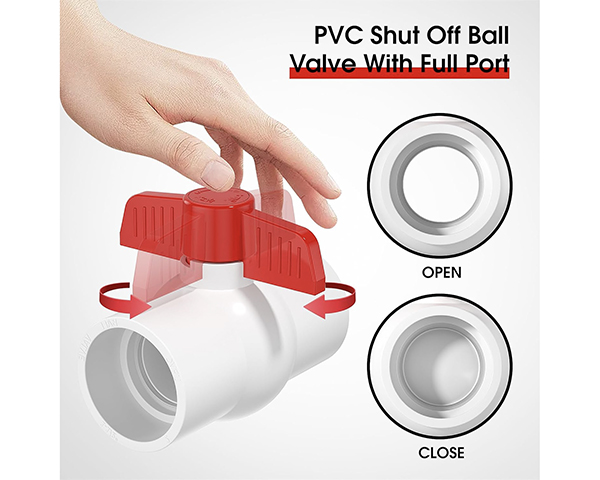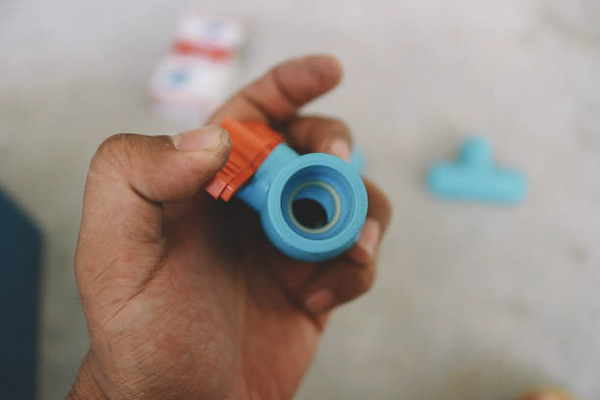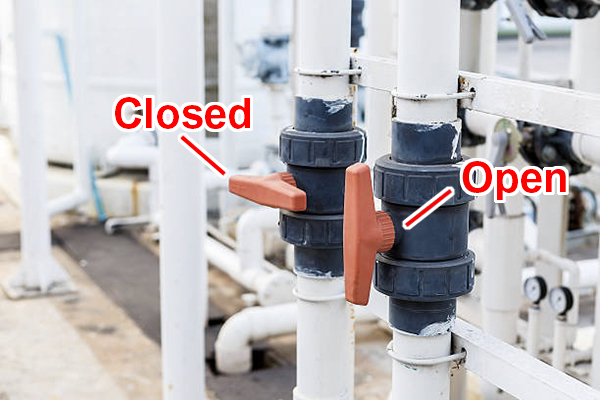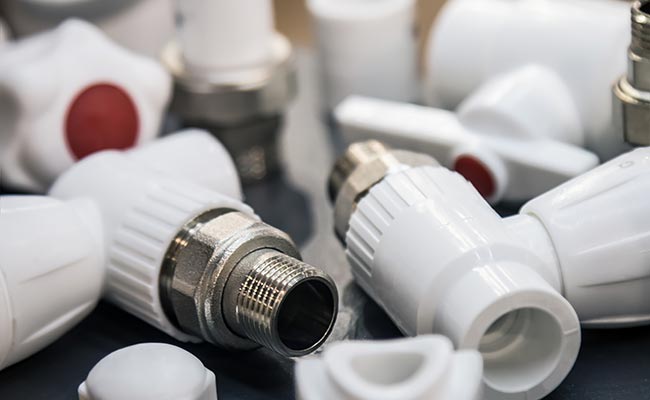You’re looking at a pipeline, and there’s a handle sticking out. You need to control the water flow, but acting without knowing for sure could lead to leaks, damage, or unexpected system behavior.
To use a standard PVC ball valve, turn the handle a quarter-turn (90 degrees). When the handle is parallel to the pipe, the valve is open. When the handle is perpendicular to the pipe, the valve is closed.

This might seem basic, but it’s the most fundamental piece of knowledge for anyone working with plumbing. I always tell my partner, Budi, that making sure his sales team can clearly explain these basics to new contractors or DIY customers is a simple way to build trust. When a customer feels confident with a product, even in a small way, they are more likely to trust the distributor who taught them. It’s the first step in a successful partnership.
How does a PVC valve work?
You know turning the handle works, but you don’t know why. This makes it hard to explain its value beyond just being an on/off switch or to troubleshoot if something goes wrong.
A PVC ball valve works by rotating a spherical ball with a hole through it. When you turn the handle, the hole either aligns with the pipe for flow (open) or turns to block the pipe (closed).

The genius of the ball valve is its simplicity and effectiveness. When I show a sample to Budi’s team, I always point out the key parts. Inside the valve’s body, there is a ball with a hole, known as a port. This ball sits snugly between two durable seals, which we at Pntek make from PTFE for longevity. The ball is connected to the external handle by a post called the stem. When you turn the handle 90 degrees, the stem rotates the ball. This quarter-turn action is what makes ball valves so quick and easy to operate. It’s a simple, robust design that provides a complete and reliable shutoff with very few moving parts, which is why it’s a standard for water management systems globally.
How to tell if a PVC valve is open or closed?
You approach a valve in a complex piping system. You can’t be sure if it’s letting water through or not, and guessing wrong could mean getting sprayed or shutting down the wrong line.
Look at the handle’s position relative to the pipe. If the handle is parallel (running in the same direction as the pipe), the valve is open. If it’s perpendicular (making a “T” shape), it’s closed.

This visual rule is an industry standard for a reason: it’s intuitive and leaves no room for doubt. The handle’s direction physically mimics the state of the port inside the valve. I always tell Budi that his team should emphasize this simple rule—“Parallel means Pass, Perpendicular means Plugged.” This little memory aid can prevent costly errors for landscapers, pool technicians, and industrial maintenance crews alike. It’s a safety feature built right into the design. If you see a valve handle at a 45-degree angle, it means the valve is only partially open, which can sometimes be used for throttling flow, but its main design is for fully open or fully closed positions. For a positive shutoff, always ensure it’s fully perpendicular.
How to connect valve to PVC pipe?
You have your valve and pipe, but getting a secure, leak-proof seal is critical. One bad joint can compromise the integrity of the entire system, leading to failures and costly rework.
For a solvent weld valve, apply PVC primer, then cement to both the pipe end and valve socket. Push them together and give a quarter-turn. For threaded valves, wrap threads with PTFE tape before tightening.

Getting the connection right is non-negotiable for a reliable system. This is an area where quality materials and correct procedure are everything. I advise Budi’s team to teach their customers these two methods:
1. Solvent Welding (for Socket Valves)
This is the most common method. It creates a permanent, fused bond.
- Prepare: Make a clean, square cut on your pipe and remove any burrs.
- Prime: Apply PVC primer to the outside of the pipe and the inside of the valve socket. Primer cleans the surface and begins to soften the PVC.
- Cement: Quickly apply a layer of PVC cement over the primed areas.
- Connect: Immediately push the pipe into the valve socket and give it a quarter-turn to spread the cement evenly. Hold it for 30 seconds to prevent the pipe from pushing out.
2. Threaded Connection (for Threaded Valves)
This allows for disassembly, but sealing is key.
- Tape: Wrap PTFE tape (Teflon tape) 3-4 times around the male threads in a clockwise direction.
- Tighten: Screw the valve on hand-tight, then use a wrench for another one to two turns. Do not over-tighten, as you can crack the PVC.
How to check if a PCV valve is working?
You suspect a valve is failing, causing issues like low pressure or leaks. You hear about checking a “PCV valve” but aren’t sure how that applies to your water pipe.
First, clarify the term. You mean a PVC (plastic) valve, not a PCV valve for a car engine. To check a PVC valve, turn the handle. It should move smoothly 90° and completely stop flow when closed.

This is a very important distinction that I make sure Budi’s team understands. PCV stands for Positive Crankcase Ventilation and is an emissions control part in a car. PVC stands for Polyvinyl Chloride, the plastic our valves are made of. A customer mixing them up is common.
Here’s a simple checklist to see if a PVC valve is working correctly:
- Check the Handle: Does it turn a full 90 degrees? If it’s very stiff, the seals may be old. If it’s loose or spins freely, the stem inside is likely broken.
- Inspect for Leaks: Look for drips from the valve body or where the stem enters the handle. At Pntek, our automated assembly and pressure testing minimize these risks from the start.
- Test the Shutoff: Close the valve completely (handle perpendicular). If water still trickles through the line, the internal ball or seals are damaged, and the valve can no longer provide a positive shutoff. It needs to be replaced.
Conclusion
Using a PVC valve is simple: handle parallel means open, perpendicular is closed. Proper solvent-weld or threaded installation and functional checks
Post time: Aug-27-2025




